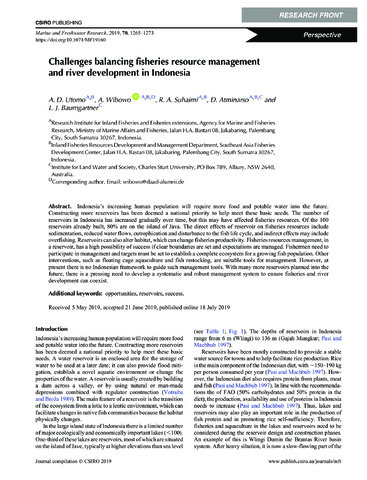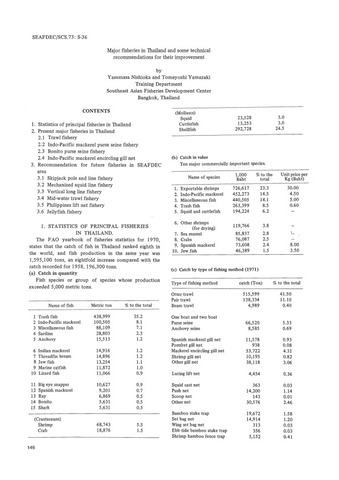Challenges balancing fisheries resource management and river development in Indonesia
Share
စိတ္တဇ
Indonesia’s increasing human population will require more food and potable water into the future. Constructing more reservoirs has been deemed a national priority to help meet these basic needs. The number of reservoirs in Indonesia has increased gradually over time, but this may have affected fisheries resources. Of the 100 reservoirs already built, 80% are on the island of Java. The direct effects of reservoir on fisheries resources include sedimentation, reduced water flows, eutrophication and disturbance to the fish life cycle, and indirect effects may include overfishing. Reservoirs can also alter habitat, which can change fisheries productivity. Fisheries resources management, in a reservoir, has a high possibility of success if clear boundaries are set and expectations are managed. Fishermen need to participate in management and targets must be set to establish a complete ecosystem for a growing fish population. Other interventions, such as floating cage aquaculture and fish restocking, are suitable tools for management. However, at present there is no Indonesian framework to guide such management tools. With many more reservoirs planned into the future, there is a pressing need to develop a systematic and robust management system to ensure fisheries and river development can coexist.
Keywords
opportunities reservoirs successSuggested Citation
Utomo, A. D., Wibowo, A., Suhaimi, R. A., Atminarso, D., & Baumgartner, L. (2019). Challenges balancing fisheries resource management and river development in Indonesia. Marine and Freshwater Research , 70(9), 1265-1273. https://doi.org/10.1071/MF19160
DOI
10.1071/MF19160ဘာသာရပ်
စုစည်းမှုများ စုစည်းမှုများ
Related items
Showing items related by title, author, creator and subject.
-
The Status of Fisheries in the Republic of Maldives
Faiz, Mohamed (Training Department, Southeast Asian Fisheries Development Center, 1997)The paper discusses the tuna fisheries in Maldives which dominates its fishing industry. Apart from a very strong domestic market, tuna is also the main export commodity of the country. Moreover, reef fisheries such as, ... -
Major fisheries in Thailand and some technical recommendations for their improvement
Nishioka, Yasumasa; Yamazaki, Tomeyoshi (Japan International Cooperation Agency, 1977)Presented in this paper is the development of fisheries industry in Thailand. The data on the production of the principal fisheries species and major fishing methods are also presented. Also included are the recommendations ... -
Status of Fishing Conditions in Cambodia
Sour, Kim; Vuthy, Ros (Training Department, Southeast Asian Fisheries Development Center, 1997)Fisheries in plays a very important role in Cambodia’s national economic development. Total fish catch production in 1996 was 104 310 tones, about which 60% was contributed by inland capture fisheries, 30% by marine capture ...






